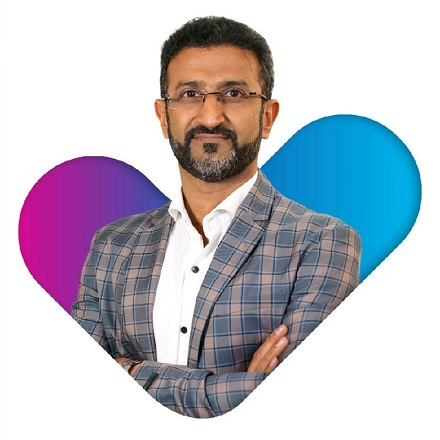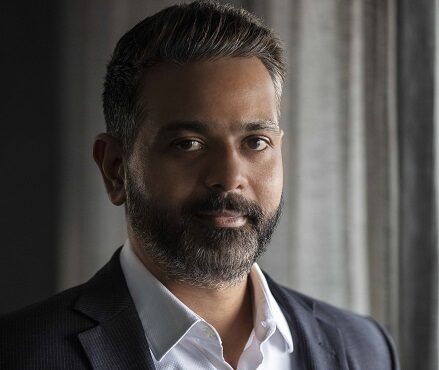Revolutionizing Diabetes Management: The Fitterfly Story and the Power of Health-Tech Innovation

CXOToday has engaged in an exclusive interview with Dr Arbinder Singal – CEO & Co-Founder, Fitterfly
Tell us about Fitterfly and the story behind Fitterfly’s inception.
Fitterfly is the outcome of my personal experience with diabetes. Despite being a fitness and health-conscious person, I was still diagnosed as pre-diabetic and I struggled with fluctuating blood sugar levels. With a very strong family history of diabetes, I was worried. I tried a CGM sensor and its correlation with my day to day activities and found the insights quite eye-opening. This CGM sensor data when coupled with the nutrition insights from Fitterfly’s comprehensive food database was a game changer. This is when I looked around at the scenario of diabetes treatment and found that tens of millions of people with the same condition can benefit from a solution that would help them manage or reverse the problem.
After investing in research and development over two years, we were able to launch Fitterfly as a highly personalized innovative digital therapeutics (DTx) platform with what we called the Personalized Glycemic Response (PGR). We built comprehensive programs which are a perfect combination of technology and human coaching to get the best health outcomes. For people in the early stage of diabetes, Fitterfly programs help in diabetes remission which the common public sometimes refers to as diabetes reversal. In the late stage of diabetes, they help in reduction in medicines and complications.
All this is possible due to the holistic wellness nature of our platform focusing on nutrition, fitness, stress, and sleep management focused on long-term behavior change. Fitterfly uses Internet of Things (IoT) to integrate with various wearable devices such as fitness watches, glucose monitors etc. We use AI and machine learning algorithms to correlate the diversity of data such as food and activity logs, symptoms, blood sugar and stress related data etc. The platform is hosted in a multi-cloud environment and we have introduced Android as well as iOS apps for our members.
Can you elaborate on the unique features and strengths that set Fitterfly apart in the health-tech and digital therapeutics industry?
- Strong clinical proof with a strong medical team
- Best in class outcomes for diabetes
- Personalised plans using technology
- Complete 360 degree care
- Evolving technology and use of AI
Fitterfly is a distinctive DTx platform exclusively tailored for comprehensive diabetes management. Our USP is our emphasis on behavioral modifications. By surpassing conventional prescriptions and fostering healthier habits with guidance from experts, we have been able to achieve an impressive success rate exceeding 95%. The efficacy and research behind Fitterfly’s services have been highlighted through 50+ presentations at prestigious international events, including the American Diabetes Association, 2023 (2 papers) and ADA 2022 (with 5 papers), International Diabetes Federation 2021, among others. Our research findings have also been disseminated across platforms like the European Conference on Endocrinology and Advanced Treatments and Technologies in Diabetes. Fitterfly is also striving to spread awareness and rally multiple stakeholders, including central and state governments, corporations, insurance companies, IRDAI, and others, to collaboratively construct a holistic ecosystem.
Our newly launched division, X-Labs, harnesses the power of AI and human-centred design to redefine the quality of care provided to individuals battling chronic conditions. X-Labs covers two critical area: AI Coaching and Chatbots and leveraging personalized data analysis and hybrid workflows to unleash the potential of data.
To address the complexities of glucose management, we have also come up with the first-of-its-kind PGR score. It aims to address the challenges that individuals encounter in regulating blood sugar after meals. With CGM’s novelty, understanding glucose trends required time, deciphering wave graphs with icons for meal, exercise, and medication events. Fitterfly’s user-centric approach is reflected in the PGR score’s development, aimed at providing practical tools via advanced technology. The PGR score’s benefits encompass personalized meal guidance, promoting meal selections aligned with health goals, enhancing compliance.
Could you share some insights into Fitterfly’s growth trajectory, including the number of users or clients the company has served since its inception?
We have grown our numbers by 3x in the last 12 months and are currently growing at 12% month on month. 70% of our business is direct to consumer and 30% is B2B2C with partnerships with doctors, insurers and corporates,. We have served 25,000 paying consumers till date. We have been also able to sign up and help six top employers for managing diabetes for their employees and have shown a good outcome for them.
What personal experiences or insights inspired you to co-found Fitterfly and focus on revolutionizing patient care through technology and innovation?
Throughout my professional journey, I have been passionate about making a substantial impact in healthcare. After completing my training at AIIMS New Delhi and super-specialization in Pediatric Urology at Nationwide Children’s Hospital, USA, I dedicated myself to performing surgeries for children with intricate urinary birth defects, both in the US and India.
In 2009, I had an injury and I couldnt do surgeries for two months, thats the time when I learnt how to create website and delved into technology. I also realised that I can create a more profound influence on healthcare and started a healthtech startup which was later acquired by 1mg.com.
Post that I co-founded Fitterfly. As a surgeon, I inherently understand the concept of outcomes and that clinical outcomes are most important for any therapy. Our company’s focus areas include diabetes, obesity, and cardiovascular disease and how can we get outcomes for these conditions. Through personalized DTx programmes, we strive to assist individuals in preventing, achieving remission, and effectively managing chronic health conditions, with a particular emphasis on diabetes.
How do digital health platforms and wearable devices enhance personalized diabetes management and real-time data monitoring for patients?
Digital health platforms and wearable devices have significantly enhanced personalized diabetes management and real-time data monitoring for patients through continuous engagement and informed decision-making. Through wearable devices like CGMS, patients gain access to real-time blood glucose data, enabling them to track trends and respond promptly to fluctuations. These devices transmit data to digital health platforms such as Fitterfly, which then analyse the information using algorithms and artificial intelligence to generate personalized insights. These offer guidance on insulin dosages, meal planning, exercise routines, and lifestyle adjustments tailored to individual needs. Alerts and notifications from wearable devices and platforms inform patients of critical glucose level deviations, enabling proactive interventions to prevent dangerous highs and lows.
Further, the integration of these technologies with electronic health records (EHRs) ensures seamless data sharing between patients and healthcare providers, fostering collaborative decision-making. Telemedicine features within digital platforms facilitate remote consultations, during which patients can share real-time data, allowing providers to offer personalized recommendations. The combination of continuous monitoring, data analysis, personalized insights, and enhanced communication empowers patients to take charge of their diabetes management while facilitating well-informed interventions from healthcare professionals, ultimately improving glycemic control and overall quality of life.
What role do these technologies play in empowering individuals to make informed health decisions?
Technology is now capable of giving highly personalized guidance to people when they need it. It grants access to a vast repository of health-related information. Online resources, medical websites, and health apps offer comprehensive information, enabling individuals to educate themselves about their health concerns. Health-related technologies utilize data analysis, AI, and algorithms to offer personalized recommendations. This personalized guidance ranges from exercise and nutrition suggestions to medication reminders, aiding individuals in making choices that align with their specific circumstances. Wearable devices and health apps enable real-time monitoring of various health metrics, making it possible for individuals to make data-driven decisions about their health. This is particularly useful in case of chronic conditions like diabetes.
Telemedicine and virtual health platforms facilitate remote consultations with healthcare providers, eliminating geographical barriers and enhancing access to medical expertise. Health apps and digital platforms offer tools for self-management, such as symptom trackers, medication logs, and activity planners. These tools empower individuals to actively monitor their health, set goals, and track progress. Digital platforms leverage behavioural science principles to encourage healthy habits. Through goal-setting, progress tracking, rewards, and social support features, technology motivates individuals to adopt and sustain positive lifestyle changes.
Could you elaborate on how your background as a doctor has influenced the platform’s approach to patient care and the development of innovative solutions?
The transition from being a highly skilled surgeon to a thriving entrepreneur was not without its challenges. My personal experience with high incidence of diabetes in my family, my personal struggle with prediabetes, coupled with extensive research, inspired me to start a company in this space.
As a doctor, I understand the value of outcomes and that’s the single most important cultural bedrock on which the Fitterfly platform and team thrives. Also, I work with the team to make sure that whatever we do at Fitterfly, is scientific, clinically proven and engaging for the members. Due to my clinical background, I could help build a solution which ensures that the Fitterfly Diabetes program covers 360 degree care for people with diabetes, helps them manage nutrition, stress and sleep and generates clinical data for physicians and partners. My training at AIIMS also helped Fitterfly set up a robust clinical research department where we have presented 50+ scientific papers in top global conferences and 5 original full text articles. Beyond this due to my medical background, I help in getting trust from physician partners, insurers and corporations. All these endeavors help patients get outcomes and build a robust foundation for Fitterfly to solve the metabolic health crisis at scale.
What do you think about how technology is changing healthcare and creating new solutions for doctors and patients?
Technology has transformed the healthcare sector, benefiting both doctors and patients. For doctors, the integration of advanced technologies like AI-driven diagnostics and remote monitoring is revolutionizing their ability to provide accurate diagnoses and personalized treatment plans. This empowers them with data-driven insights, allowing for more precise decision-making and improved patient outcomes. Telemedicine and virtual consultations have expanded their reach, making healthcare more accessible to individuals regardless of their geographical location. In fact, in a recent survey we conducted on the advocacy of digital therapeutics among clinicians in India, we found that 63% of the doctors believe that technology like DTx can yield superior outcomes through greater personalization of treatment that boosts adherence and enhances patient satisfaction. For patients, technology equips them with a wealth of health information at their fingertips, empowering them to take charge of their well-being through apps. Virtual appointments provide convenience, especially for those with mobility challenges, and the connectivity fostered by patient portals and online communities creates a sense of engagement and support. Ultimately, technology is fostering a more patient-centric and efficient healthcare landscape, where collaboration between doctors and patients leads to better-informed decisions, improved health outcomes, and a brighter future for the healthcare sector.








